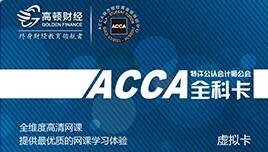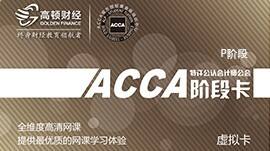【F2】F2中高错误率(70%以上)重点题分析——Celine Ji
重点例题分析 官方解释:The correct answer was D. This question tested Sections F2(b) and (c) in the Study Guide, which require candidates to be able to calculate relevant costs for overheads and those for non-current assets. 解释:这是一道考核固定资产相关成本的考题。如果现在卖出则获利$300。如果继续使用一段时间,则这段时间需要的投入的成本是$400,并且丢弃时需要用处置成本$150。 那如果选择不卖出那需要花费是成本一共是$400+$150=$550,相对应所放弃的机会成本就是$300。所以这个固定资产的相关成本是$300+$550=$850 Example 2 解释:这是一道考核absorption costing中under/ over absorbed的考题。 (ii) Actual hours worked were less than the budgeted hours used to set the predetermined overhead absorption rate. Example 3 官方解释:The correct answer was A. This question tested section D6 (k) in the Study Guide – the valuation of joint products. 解释:这是一道针对joint cost怎么分摊的题目。题目中告诉我们是用课sales value method 进行分摊的, sales value methods是 用 production * selling price 来分摊的方法。那么 J: K = 10000*2 : 5000*1= 4:1, 那么分摊到K的成本为60000* 1 / 5= $12000。 由这次高错误的题目不难发现,学生对于最基本的概念的应用仍然欠缺。那在以后的复习过程中,希望同学能更好的掌握基础,而不要意味的强攻难题。没有结实的基础,那万丈高楼都是很容易倒塌的。
以下是针对2009年12月份考试出现的错误率(大于70%)**的题目,
Example 1
A machine is no longer used by a company. It could be sold now for net proceeds of $300. Its only other use is on a short-term contract which is under consideration. The variable running costs of the machine during the period of the contract would be $400. On completion of the contract the machine would have no realisable value and would cost $150 to dismantle and remove.
What is the total relevant cost of using the machine on the contract?
A $450
B $550
C $700
D $850
By not selling the machine now there is an opportunity cost of $300, the variable running cost ($400) are relevant and at the end of the contract the dismantling and removal cost ($150) is also relevant. This gives a total relevant cost of $850.
Answer B was chosen by more than 50% of the candidates. This wrong answer could have been obtained in two ways. First as $300 + $400 – $150, the mistake here is to treat the dismantling cost as revenue from the sale of the machine. Second as $400 + $150, the mistake here is to regard the realisable value now as being non-relevant.
A company uses absorption costing with a predetermined hourly fixed overhead absorption rate. Last year, the following situations arose:
(i) Actual overhead expenditure was less than the budgeted expenditure.
(ii) Actual hours worked were less than the budgeted hours used to set the predetermined overhead absorption rate.
Which of the following statements is correct?
A Both situations would cause the overheads to be under absorbed
B Both situations would cause the overheads to be over absorbed
C Situation (i) would cause the overheads to be under absorbed and situation (ii)
cause the overheads to be over absorbed
D Situation (i) would cause the overheads to be over absorbed and situation (ii)
cause the overheads to be under absorbed
官方解释:The correct answer was D. This question tested Sections D3 (g) of the Study Guide, which requires candidates to be able to explain, as well as calculate, the under and over absorption of overheads.
Answer B was the most popular of the wrong answers, which suggests that candidates understood that situation (i) leads to over absorption and that it was situation (ii) that caused the problem. If actual hours worked are below budget then by applying the predetermined absorption rate (which is based on budgeted hours) to this lower number of actual hours will lead to under absorption.
Answers A and C were chosen by significant numbers of candidates, indicating a general lack of understanding of the topic. Interestingly when a calculation question is a set on this topic the performance is better.
(i) Actual overhead expenditure was less than the budgeted expenditure.
Overhead absorbed: Budgeted expenditure / Budgeted hours * Actual Hours忽略 Budgeted hours 和 Actual Hours的影响,因为在条件没有说明的情况下,假定是其他变量是相等的。那么因为Actual overhead expenditure 小于 the budgeted expenditure, 所以Overhead absorbed大于Actual overhead expenditure,那么就over absorbed。
Overhead absorbed: Budgeted expenditure* Actual Hours / Budgeted hours * Actual Hours因为Actual hours worked小于budgeted hours,则Actual Hours / Budgeted hours小于1,并且假定Actual overhead expenditure 和 the budgeted expenditure, 那么absorbed 必然小于Actual overhead expenditure,那么就是under absorbed。
An organisation operates a process that creates two joint products (J and K). Last month, joint costs of $60,000 were incurred and the organisation apportions these to the joint products using the sales value method. Data relating to last month were as follows:
Product Production Sales selling price
Liters liters per liter
J 10,000 9,000 $2
K 5,000 6,000 $1
What was the apportionment of joint costs to product K for last month?
A $12,000
B $15,000
C $20,000
D $24,000
Answer B was a popular wrong answer. It is obtained by apportioning the joint costs on the basis of the value of last month’s sales. It is joint production costs that are being apportioned and the ‘sales value method’ uses the sales of the production last month. The sales value of J production was $20,000 and K production was $5,000 – the appropriate ratio for J:K is 20:5 or 4:1. Product K would have 20% of the joint costs (that is $12,000) apportioned to it.
Both wrong answers C and D were chosen by significant numbers of candidates. Answer C is based on the physical production units (liters) or on the selling prices as the basis of apportionment. In either case the apportionment of joint costs to product K is one-third. Answer D is based on using the physical sales units (liters) for the apportionment.
F2 讲师: Celine Ji


















